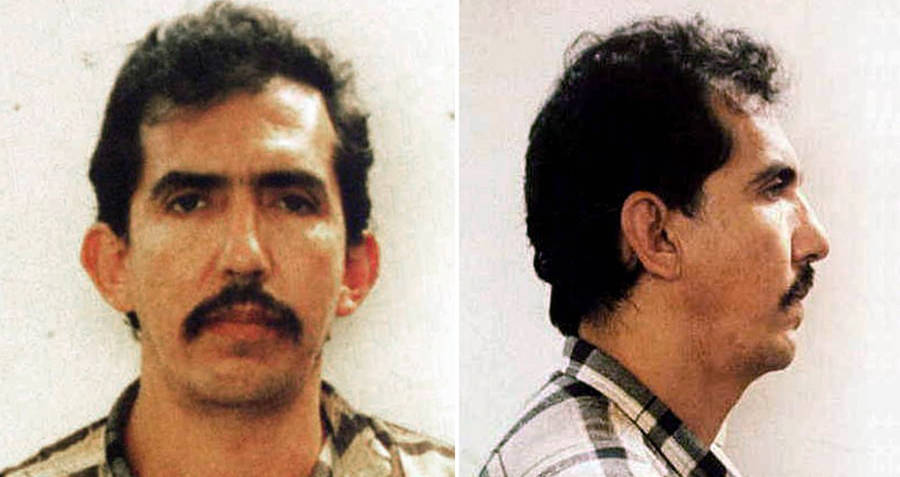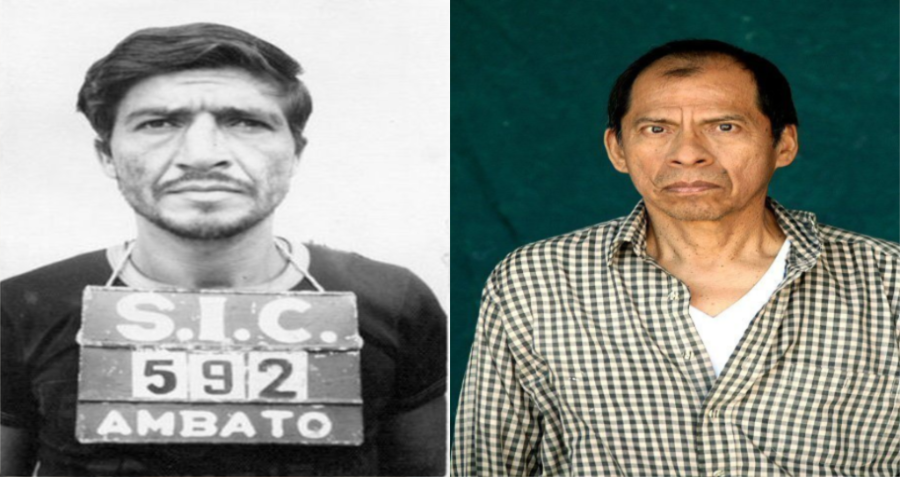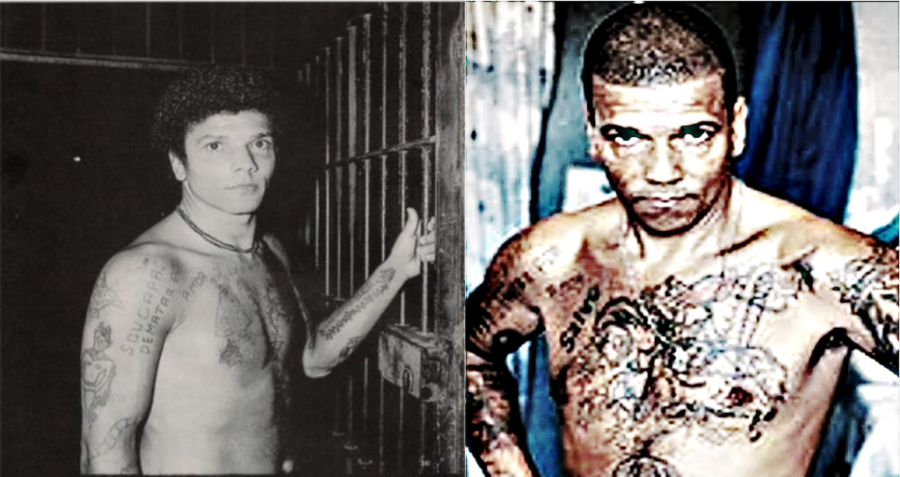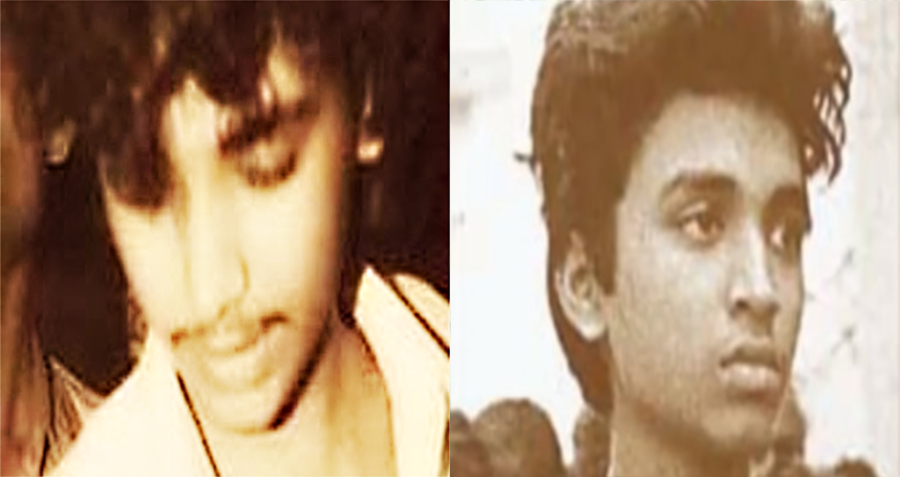What is it that fascinates people about serial killers? They seem to be a big part of the culture from countries around the world, with their influence here in America being prominent in the entertainment industry as well. The media has even created celebrity monsters on several occasions by hyping them up in highly stylized and dramatized coverage that draws the attention of the masses.
Perhaps this is an echo of humanity’s macabre fascination of death from our more uncivilized past. Public executions used to be entertainment for entire communities with almost all coming to attend and look on at the horror playing out before them with awe. It was a form of entertainment that was casually accepted by everyone with no sense of depravity found in the enjoyment of watching other humans suffer.
In any case, our fascination with serial killers reveals a darker nature hidden from our collective conscious minds. The serial killer is one of us. They are born from our society, and just like the homeless population, they are a mirror of the darker parts of human nature present in all cultures. People tend to think that they are separate from others, but we are much more the creations of the collective than most would care to admit.
Beware, though, the following article is filled with graphic and incredibly dark content that many may find disturbing on multiple levels.
1.Luis Garavito (135 confirmed kills possible 300+)

1.Luis Garavito (135 confirmed kills possible 300+)
Luis Alfredo Garavito (the Beast) was born January 25, 1957, Génova, Colombia, and known to be one of the most notorious serial killers in history, who was convicted of murdering 189 boys in the 1990s. Though it’s estimated his total kills could have been more than 300, there’s evidence lacking that ties him to many of the kills linked to him. His primary calling cards were rape-mutilation-and torture, and his preferred method of killing was a simple knife or a screwdriver.
You may wonder how a killer could take the lives of so many people without being noticed, and that’s because of Luis’ chosen prey. He would stalk the poor neighborhoods of Columbia and focus on boys that families could not really afford to support or wanted, leading to the murders being overlooked. Which is a horrifying mirror of society, as well as an objective look at the mentality of certain people?
Luis was born in Génova, Quindío, Colombia back in 1957, and was the oldest brother of seven sons. And the old saying “behind every monster, you’ll find a traumatized child” rings true in his tale. From a very early age, Luis not only suffered physical abuse, but psychological and sexual abuse as well by the consistent rape by two of his adult neighbors. Not only directed towards him, but to his family. From the earliest age, Luis was brought into a world where he had no control and was always under threat of unavoidable suffering.
The waking nightmare of his life led him to have a very dark outlook on life. Goodness, kindness, and allowing oneself to become vulnerable was a fantasy. The only truth and reality were his knife and the inevitable pain that comes from letting one’s guard down. He was “reality.” Everyone else lived in a dream.
Luis had very little education, ending up ditching school altogether, and left home at the age of 16. Finally free of the dark atmosphere of his childhood, he managed to find some odd jobs, even selling religious icons and prayer cards as a vendor. But the man’s demons would not leave him alone. Luis suffered from depression attempted suicide, though he survived, the man was in psychiatric care. Eventually, Luis just became a drifter, and the killings began.
Exactly when his killing spree began isn’t entirely clear because the man’s testimony wasn’t exactly “reliable,” but his modus operandi remained consistent throughout his victims before being caught.
In many of the cases, because of the decomposition of his victims, the best way to connect them to Luis was the consistent cuts between the fourth vertebra of the neck. For the most part, internal organs were left unaffected by the attacks, though not always. During the investigation, it was noted the killer would dismember his victims, but this was later proven only to be the killer’s strategy if he had to move the body somewhere from the crime scene, which was actually very rare. In a few cases, the killer had chopped up the bodies and put them in bags filled with stones and dropped into bodies of water. But for the most part, this was the exception concerning this serial killer. The bodies were usually just buried in a shallow grave at the crime scene when he was done.
Another link the majority of cases had was empty bottles of cheap liquor. An alcoholic himself, Luis would offer it as part of a lure, but indulge in it himself before, during, and after the act. The killer would lure children offering them candy or other such things, and ask them for help to move something and things of that nature. He’d befriend the kids and go on a walk with em until they’d get tired of it or tired physically. Exactly how the murders would go down differed. But for the most part, he’d tie them to trees, torture, rape, slit their throats, behead, and then bury them in a shallow grave. Not all of these happened all the time or in any particular order. He’d often tie them up in a way that they could move around but not be able to run away, and the murderer took his time in the kill.
Very bizarrely, when Luis got caught, he didn’t claim full ownership of the murders. He claimed that he only killed while drunk and that in the act of killing, he was possessed by a “superior being” that was beyond him from the spirit world. And in his murders, he was actually doing something spiritual and of a higher nature.
For such little education, Luis Garavito turned out to be quite intelligent. It was pieced together by law enforcement that when he entered a town, he’d subdivide places into sectors suitable for murder, and locate all the best places that he could commit the heinous acts in solitude that were close enough to urbanized areas not to make the kids suspect his intentions or become afraid that they were going too far from home. The killer could put together these areas like a puzzle, and even in prison could replicate them with precision, which led to police discovering bodies wherever he told them to look.
Luis would only lure children to their doom during the daytime to make it seem less suspicious and only hunted for them when the town was busy, and a lot was going on, such as weekends and whatnot. The more active and more populace the areas, the better.
Eventually, though, he was caught. On April 22, 1999, outside of Villavicencio Colombia, he was caught attempting to rape a young boy. The witness was a homeless man looking on from the bushes, and the monster was finally caught, though at first, the police had no idea exactly who they had captured.
The killing spree went on for around seven years, from 1992 until 1999. When Luis began his confessions, no one really believed that all the disappearances and murders were the doing of one man. It was just so much. He had to have been taking credit for many killers’ acts. But, with the investigation, and Luis telling law enforcement where to find bodies, and bodies always being found where he directed them, the entire world was shocked a single man could kill so many for so long without getting caught. It did not take long before police found 114 skeletons, but that was not the end of it. He’s linked to many more murders, with today’s count being around 300.
In Columbia, they don’t have “life sentences” or “the death penalty,” so at first, Luis was sentenced to 30 years in prison. He helped police find all his crime scenes for the most part and was extremely well behaved, which allowed him to win a sentence reduction by eight years, which really pissed of the public. The thought of the serial killer with the highest known modern kill count was offensive to them and the families of the victims, to say the least. People got so pissed off Columbian law made an exception and changed his prison sentence to 60 years, which is being pushed heavily to become 80. Luis is kept out of the general population because he would most likely be murdered instantly.
Luis Alfredo Garavito (the Beast) is alive and well to this day.
2. Pedro López (110 confirmed kills possible 420)

Pedro Alonso López (The Monster of the Andes) was born on October 8th, 1948, in Santa Isabel, Colombia. His family had nothing and lived in filth and squalor. This killer is accused of raping and murdering 400 plus girls all across South America, with a confirmed kill count of 110, and his killing spree would go on to receive international attention for the sheer amounts of deaths linked to him. Pedro’s main calling cards were rape and strangulations of girls between nine and twelve years old, with his preferred method of killing being his own hands.
Though much of Pedro’s testimony and the story given concerning his history is questionable, there is little objective evidence to work with concerning his upbringing. But, according to Pedro, he is the son of a prostitute and just one among thirteen bastard children. And there was nothing about his home that inspired warmth. His mother was brutal and overbearing, with a cold and iron-fisted nature. During Pedro’s childhood, the crime rate of Colombia was an astonishing 50 times higher than anywhere else in the world. Constant political unrest, guerrillas who violated human rights continually, and corrupt armed forces that patrolled the streets with total autonomy to do whatever they wanted to common people was the norm. No matter how bad his home life was, the streets were worse, and he greatly feared the outside world. But it wouldn’t be long before Pedro was forced to face that fear.
This serial killer’s life of both victimizing and being victimized started very early, with him being kicked out of the house when he was only eight years old for molesting his younger sister. Shortly after being pushed on the perilous mean streets of Columbia, he was abducted by an older man who took him to his home and sodomized him consistently for some time. This childhood trauma fractured what little good could have remained in Pedro, and forever altered him, damaging what moral compass there was in him, to begin with.
After escaping, Pedro was like an abused, wounded animal and avoided strangers at all costs. He would rarely leave dark alleyways and ate garbage to survive. The youth lived like this for some time, in filth, mud, and poverty, until eventually managing to find a foster home with an American family. They put him in a school specifically for orphans, but Pedro says a male teacher molested him, so he ran away from this semblance of a stable life offered to him by the foreigners after stealing some money from the school.
Pedro would fall into a world of darkness, surviving by begging for food and committing criminal acts. He did this for six years until he was caught for car theft at 18, and had to serve jail time, where four other inmates sexually assaulted him. They held him down and took turns with him. According to Pedro, he fashioned a prison shank and killed three of the rapers separately in vengeance while still serving his sentence, which gained him more prison time. The last of his attackers managed to escape his wrath. After Pedro got his first taste of blood, he felt the urge to kill more and more, and his stay in prison did not help his emerging predatory instincts.
Pedro would become a complete madman, with his horrific life experiences driving his sanity beyond the breaking point. Shortly upon being released from prison, he began his unthinkable, killing spree of pure evil.
Pedro was active from 1969 until1980. Shortly after his prison sentence was over, he began preying on young girls. It was the innocence of the girls and the sexual traumas inflicted on him that shaped his preferred victim. Forced to endure in a real-life nightmare, he wanted to force them to see the real world through his acts. The real world to Pedro being one of sadistic evil where the strong prey freely on the weak for their own twisted desires and amusements. His specialty was abducting girls from native tribes, but he would get around from city to city and town to town throughout South America.
In 1980 Pedro slipped up and was caught attempting to abduct a young girl from a native tribe. He was beaten and tortured to an extent, with the vigilantes burying him and pouring honey over his head for ants to eat him alive. Luckily for Pedro, a missionary convinced them to stop, and he was given over to law enforcement.
At first, the investigators were skeptical of Pedro’s claims of killing so many girls. Law enforcement was curious about all the vanishings of young girls in the country, and most assumed it to be sex trafficking or girls forced into prostitution. But when the madman began directing them to areas where they could find body after body of young girls, they began taking Pedro VERY seriously.
Pedro Alonso López AKA, the Monster of the Andes, estimated that he’d killed 100 girls in Colombia, many more than 100 in Peru, and 110 girls in Ecuador. His confirmed kills are 110, but possible kill count as high as 420 innocent victims.
Pedro is alive and well in prison to this day.
3. Daniel Carmargo Barbosa (72 confirmed kills possible 150)

Daniel Camargo Barbosa (The Sadist of Chanquito) was born on January 22, 1930, in Columbia. He has 72 confirmed kills with a possible kill count of up to 150 and was active throughout the 70s and 80s in both Colombia and Ecuador. Barbosa’s main calling cards were raping and killing young girls with his preferred method of killing his bare hands through strangulation, a knife, or a machete.
Yet again, it looks like the source of this serial killer’s dark obsessions came from childhood trauma. His mother died when he was very young, which emotionally scarred him severely, but he also was lucky enough to have an abusive father. Daniel’s Dad was the stereotypical overbearing and distant horrible father. He also had an evil stepmother who terrorized him regularly and would often make him the laughing stock among his peers by dressing him up as a girl and parading him around as a form of punishment.
Unlike the other killers on this list, we don’t have as much filler to go off concerning his life because Daniel Camargo Barbosa isn’t chilling in prison like the top two killers already mentioned. Barbosa was murdered by another inmate while incarcerated, so no more can be discovered about him through interviews. Though before that, The Sadist of Chanquito left a trail of horror behind him.
Barbosa, unlike the other two already mentioned, could also have nonpsychotic relationships with women, having a relationship with a woman named Alcira for some time and even having two children with her. However, he left her after being attracted to another woman by the name of Esperanza. Though his infatuation somewhat changed when Barbosa discovered she wasn’t a virgin. They planned to get married, so the whole thing almost changed Daniel’s mind about her because he had gained an unhealthy obsession with virgins. Oddly enough, instead of realizing he was a creep, Esperanza said if he stayed with her, then she’d help find him, virgin girls, to have sex with on the side.
This dark pact lead to Esperanza helping Barbosa drug and rape five young girls. However, he had not started his serial killer career yet. All the girls survived, though traumatized. The last of the girls went to the police about the couple. The two went to separate prisons on April 10, 1964. Daniel Barbosa then did eight years of hard time.
After being released, Daniel became a street vendor, but sadly he didn’t learn anything from his incarceration other than to not let his victims survive to report his actions after he sexually assaults them. One day while passing by a school he kidnapped a nine-year-old girl and brutally raped and killed her, this being his first murder. However, this was only the beginning of his killing spree in Colombia, because it’s estimated he may have killed around 80 girls during this stint before being caught. His mistake was he went back to the crime scene to grab T.V. monitors accidentally left there meant for selling. But, they only knew of the murder that they caught him at and not all the others. Law enforcement locked up Barbosa on the island prison of Gorgona, where he remained from 1977-1984.
Spending so much time in prison, Daniel taught himself the currents of the sea that surrounded his island prison and learned how to fashion a usable boat somehow. He planned his escape carefully and made his move. Luckily for him, no one was really out to put a spotlight on him because the prison just shrugged and said sharks ate him. They didn’t even investigate if he’d made it to land. The press, too, just chalked up the escape to being inconsequential because he was shark food. They had no idea the monster they’d allowed back into society with little effort in containment on their behalf.
Barbosa escaped to Ecuador, where he was active again until 1986. He killed up to 54, and once again, law enforcement did not put together all these vanishing girls could be the work of a single serial killer. They assumed it was roaming gangs or something, even if there was no evidence to support this. Daniel lived in poverty on the streets, sometimes making some money by selling the belongings of his victims, but pretty much living the life of a vagrant.
Barbosa loved to prey on poor girls. Ones that would be harder to make a big deal about if they went missing. He’d usually lure them by asking them to show him the way to a church near the edge of town and offer a reward or a job. On the way, he’d sidetrack them and “look for a shortcut” that would lead them near some thick woods or something. He’d stab ones that resisted him. In any case, he’d commit his horrifying evil, then just leave the body where it was, or other times dismember them.
Then in 1986, police were patrolling and saw the serial killer on the streets and thought something was off about him. Being suspicious, they rolled up on Daniel and were surprised he was carrying the bloody cloths of a fresh victim. Lucky them. Even luckier, one of his victims had recently escaped him and was able to identify Barbosa. After this, the killer very calmly confessed to killing 71 girls in Ecuador after his prison escape, where everyone said he’d been eaten by sharks.
Daniel Barbosa then remorselessly showed law enforcement where many of the bodies were of his victims. When asked why he committed the horror he did on young girls, the madman said: “Because they cried” and went on about how he did what he did as revenge on women’s unfaithfulness. For women not being what they’re supposed to be. His acts were punishment against the opposite sex as a whole, not individual victims.
The Sadist of Chanquito was murdered in prison by Luis Masache, who avenged the death of his small cousin, who’d been a victim of Barbosa. All in all, Daniel Camargo Barbosa had 72 confirmed kills, but the tally is most likely around 150.
4. Pedro Rodrigues Filho (71 confirmed kills possible 100+)

Pedro Rodrigues Filho, AKA Pedrinho Matador (Killer Petey) was born June 17th, 1954, in Santa Rita do Sapucai Brazille. Straight from the start, Pedro lived in a world of violence, even before he was born. His father regularly beat his mother, even doing so while she was pregnant with him. This caused Pedro to be born with an already injured skull.
It’s a breath of fresh air to move away from the deeply disturbing child murderers, because Pedro is a serial killer that’s “different” from the others.
Early in life, Pedro had intense urges to kill; he found it hard to control. The first incident where it took over being at the age of 13 when he almost murdered his cousin during a fight by pushing him into farm machinery. Though his cousin survived. When he was 14, his father was fired by wrongful termination due to being blamed for stealing that was obviously not him. The young Pedro killed his father’s transgressor (the vice-mayor) brutally with a shotgun, and then murdered the school guard who he concluded was the actual thief.
Leaving his home to avoid justice, Pedro turned to petty crime and burglary. Being so young, he grew up steadily in the Brazillian underworld. His next victim was a violent drug dealer, and this killing of “people who deserved it” slowly started to become an obsession in the back of his mind.
Eventually, Pedro met Maria Aparecida Olympia, and the two formed a powerful bond. He even moved in with the woman, and they enjoyed each other for some time in a strong endearing relationship. She eventually became his fiance. That is until gang members murdered her.
On a path of vengeance, he tracked down many people involved with her death or any who might know the identity of the perpetrators or ring leader behind the attack. Pedro tortured and killed them, finding the identity of the one behind Maria’s death, at a wedding organized by the gang leader, he went on a killing spree.
Not long after this, a man who got his favorite cousin pregnant but abandoned her would feel Pedro’s wrath, because he didn’t take kindly to it, and shot the man dead in cold blood.
One fateful day Pedro discovered that his father had murdered his mother with a machete and dismembered her body. Fueled by vengeance, he tracked down his father, stabbing him viciously 22 times. Pedro then opened his father’s chest and ripped out his heart, taking a bite out of it, and casually throwing it to the ground.
Pedro Filho would go on to kill more violent criminals who preyed on the innocent until he was finally arrested and sent to prison. On the way there, police put Pedro in a car with another criminal that happened to be a rapist. The existence of the rapist offended Pedro, so thinking the world would be better without him, he killed the man on the way to his incarceration.
Upon arriving, the prison kind of overwhelmed Pedro, because there were so many people that deserved to be killed there. Pedro killed 47 other prisoners while locked up. Being a killer of killers, the inmates really hated him, and he murdered other prisoners who attacked him, even at one point taking on five by himself and coming out on top.
Pedro did a lot of hard time, but eventually managed to be released from prison in 2007. However, he was arrested again in 2011 and remains incarcerated to this day.
Pedro Rodrigues Filho’s modus operandi revolved around him targeting criminals, and under his criminal profiling is described by psychiatrists as an “avenger/vigilante”-type of serial killer who was incredibly intelligent with a photographic memory. His method of killing varied depending on what he had on hand even though he himself stated his favorite way to kill was to hack his victims to pieces with bladed weapons, Pedro also used guns, blunt objects, ext. He would look up the names and addresses of his victims and methodically track them down on a level similar to a detective. Usually being inspired to do so after discovering a horrible crime at been committed and researching it. He was not necessarily sadistic all the time but would torture his victims to death when motivated by a sense of justice or anger. When focused mostly on thrill, he’d usually just commit clean kills. Interestingly, he would also adapt his modus operandi in a copy of the last criminal he killed, taking on their way of killing to murder his next victim, which is very unique among serial killers.
Pedro Rodrigues Filho AKA Killer Petey never killed any innocent people or anyone he didn’t think deserved it. He was active from 1968 until 2003 and has a kill count of 71 confirmed kills, with a possible 100+ because many have not been fully connected to him through evidence yet. Pedro may be the nicest serial killer who ever lived, and is one of the most fascinating psychological profiles to study in modern criminology.
5. Kampatimar Shankariya (70 confirmed kills)

Kampatimar Shankariya was born in Rajasthan, India, in 1952. Sadly out of all the serial killers with the highest kill counts, Kampatimar remains an elusive mystery. Not much is known about him other than urban legends and rumors. There is very little to go off of when researching him other than a handful of sources and a single newspaper article. Which is bizarre and almost like someone in power was trying to sweep his existence under the rug. Though it is essential to keep in mind that not all countries are very open to releasing legal documents and case files of their native criminals, and India is one such nation to keep their business under wrap to outsiders. So Kampatimar has the dubious honor of being one of the serial killers with the highest kill counts while also being one of the least researched.
I could have put Javed Iqbal, in this spot at number five, but I’m too depressed to talk about more child murderers, and the kill counts on these two are up for debate.
In any case, the childhood and early life of Kampatimar remains a mystery. It wasn’t until around 1977 that he became active as a serial killer with the discovery of people all across Rajasthan, Punjab, and Haryana in India found with broken necks caused by bludgeoning. Making this killer unique in his choice of murder weapon, a simple everyday hammer.
Kampatimar’s modus operandi was to wait in dark alleys for anyone unlucky enough to cross his path and ambush them by hitting them with his hammer in the kneck just below the ear. This makes Kampatimar the only “Disorganized Killer” type of serial killer on this list.
The FBI classes serial killers into three different types. It’s impossible to fully categorize serial killers and label them effectively, much less understand them, but their methods can help define what kind of criminal they are. Making different categories of serial killer types makes it easier for investigators to do their job in painting pictures of how killers operate. The three different types of serial killers are:
A. The Medical Killer.
B. The Organized Killer (which is the majority of serial killers).
C. The Disorganized Killer.
There are also subclasses such as “Power and Control,” “Visionary,” “Mission,” and “Hedonistic.” However, we’re just going to focus on the three overarching types of serial killers.
The thing that makes the “Disorganized Killer” separate from the others is that they pretty much never plan out their victims ahead of time, and don’t really seek out specific people. These types of serial killers usually have lower intelligence than other killers and mostly keep on the move to avoid capture rather than covering up their tracks. In fact, they rarely, if ever, try to cover up their crimes. Their kills are random and basically just focused on someone who is in the wrong place at the wrong time. This classification of serial killer rarely has close social bonds and often has extreme antisocial behavior. Such as someone suffering from a form of mental illness that makes ordinary people want to avoid them.
Now, you may think that this type of serial killer should be easy to catch concerning their average of having a lower IQ and reckless ways they carry our their murders. However, this couldn’t be further from the truth. The “Disorganized Killer” is actually far harder to apprehend than other types. This is because they are so random and unpredictable. “Organized Killers” often leave clues and calling cards and make mistakes trying to cover up the crimes that can be directly linked to them. For the most part, a “Disorganized Killer” could be anyone from the evidence they leave behind at the crime scene.
It’s this chaotic nature that allowed Kampatimar Shankariya to wrack up such a high kill count. But indeed, he was eventually caught when he was 27. This hammer murderer wracked up a kill count of 70 confirmed kills before being put on trial in India. The most fascinating thing about Kampatimar is he wracked up this massive kill count in the span of only a year, from1977-1978, which has to lead many to speculate he had some kind of mental breakdown and “snapped” in 77. That amount of killing in such a short time beats all the other serial killers on this list, and if he hadn’t been caught, he most likely would be number 1.
After his trial, Kampatimar was sentenced to death by hanging, and his final words were:
“I have murdered in vain,” said India’s most prolific serial killer as he went to the gallows in Jaipur on this date in 1979. “Nobody should become like me.”

Have a good night, sleep tight




2 Comments
Lavera Stivers · January 31, 2020 at 5:54 pm
Excellent article! We are linking to this great article on our site. Keep up the great writing.
Cryptic Chronicles · February 1, 2020 at 7:07 pm
Thank you!